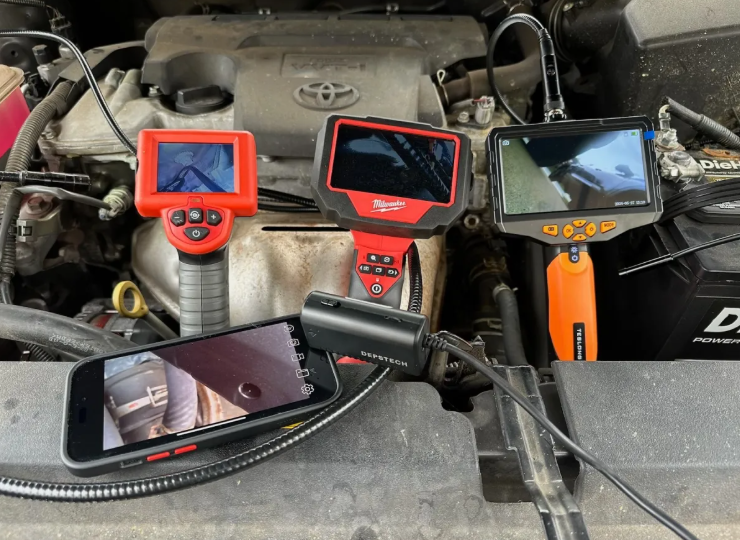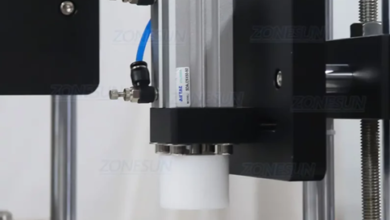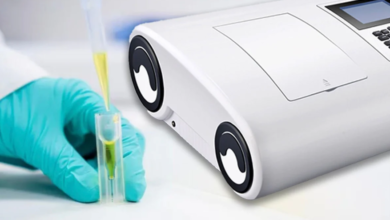
Engines to Pipes: Practical Uses of a Mini Borescope
When it comes to inspecting tight, hard-to-reach spaces, traditional tools often fall short. That’s where the mini borescope proves its worth. Compact, flexible, and equipped with advanced optics, this device has become an essential tool across industries. From diagnosing mechanical issues in engines to spotting leaks in pipelines, mini borescopes offer a precise, non-invasive way to see the unseen.
Automotive Applications
Engines are complex systems with many components hidden deep inside. Mechanics once had to rely on guesswork or dismantle large sections of an engine to locate problems. With a mini borescope, they can now inspect combustion chambers, valves, pistons, and cylinder walls without major disassembly. This saves time, reduces labor costs, and prevents unnecessary damage.
For example, carbon buildup on valves or small cracks in pistons can be detected in minutes. Mechanics can also check for signs of wear in turbochargers or cooling passages. The mini borescope gives technicians clear visuals of hidden components, enabling faster, more accurate repairs.
Plumbing and Pipe Inspections
Pipelines—whether in homes, commercial buildings, or industrial settings—are notorious for hidden problems. Leaks, corrosion, and blockages often go unnoticed until they cause costly damage. A mini borescope can be fed into pipes to visually assess conditions without cutting walls or tearing up flooring.
Plumbers use these devices to locate clogs, verify the integrity of seals, and identify rust or sediment buildup. By pinpointing the exact issue, repairs become more efficient and less invasive. This is especially valuable in older structures where pipes may be fragile or difficult to access.
Industrial and Manufacturing Uses
Beyond engines and pipes, mini borescopes are integral in quality control and equipment maintenance. Manufacturers use them to inspect machinery, welds, and castings for defects. Aerospace engineers rely on borescopes to examine turbine blades, fuel lines, and internal components of jet engines, ensuring safety and reliability without costly dismantling.
In chemical plants and refineries, a mini borescope is often used to inspect tanks, heat exchangers, and pressure vessels. Early detection of cracks, leaks, or structural weaknesses helps prevent downtime and ensures compliance with safety regulations.
HVAC and Building Maintenance
Heating, ventilation, and air conditioning systems have ducts and vents that are challenging to examine directly. Mini borescopes allow technicians to check for blockages, mold growth, or mechanical failures in fans and coils. For building inspectors, these devices are also useful for evaluating insulation, wiring, and structural conditions behind walls or above ceilings.
During regular upkeep, property owners can use a mini borescope to find small problems before they get worse and need major repairs. Taking this proactive step saves money and makes building systems last longer.
See also: Quality Assurance in Custom Software: Zchwantech’s Best-Practice Approach
Medical and Veterinary Applications
While industrial models differ from medical endoscopes, mini borescope technology has inspired advancements in healthcare and veterinary practices. Flexible scopes allow doctors and veterinarians to examine internal organs with minimal invasiveness. This crossover of technology demonstrates the broad potential of miniaturized inspection tools.
Advantages of Using a Mini Borescope
The rise in popularity of the mini borescope is no surprise. Its key benefits include:
- Non-invasive inspection – View hidden areas without dismantling equipment or structures.
- Cost efficiency – Reduce unnecessary repairs and labor time.
- Precision and clarity – High-resolution imaging helps identify problems accurately.
- Versatility – Applicable across multiple industries, from automotive to construction.
Final Thoughts
From engines to pipes and beyond, the mini borescope has revolutionized the way professionals and DIY enthusiasts approach inspection tasks. Its ability to provide a clear view of hidden spaces makes it a must-have tool for mechanics, plumbers, inspectors, and engineers. These devices are getting smaller and smarter as technology keeps improving. They are an essential way for people to see what’s hidden and solve problems before they get worse.




